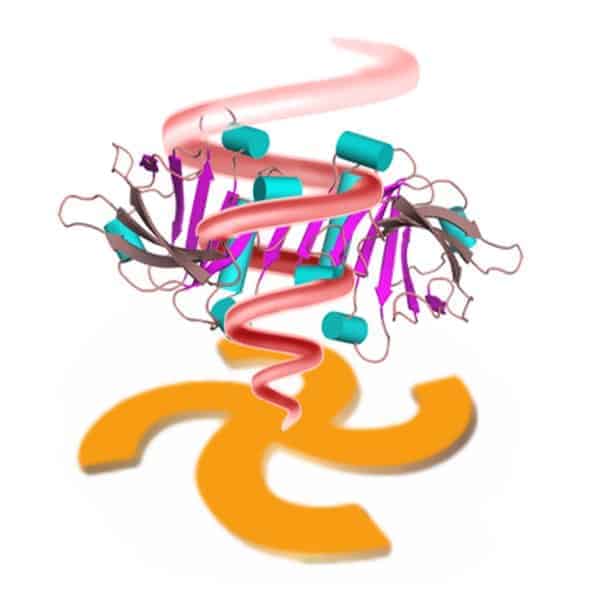
Researchers at the University of Glasgow in the UK are the first to have created “super-twisted light” in the lab. The light is so-called because it has a high degree of circular polarization and could be used to detect minute quantities of biological molecules in solution. Indeed, super-twisted light could help scientists study the proteins responsible for neurodegenerative diseases such as Alzheimer’s or Parkinson’s.
Most biological molecules have a certain chirality (right- or left-handedness) and this intrinsic property can be used to detect biomolecules in “chiroptical” spectroscopic techniques such as circular dichroism, optical rotatory dispersion and Raman optical activity. Here, scientists typically measure the small differences when left- and right-circularly polarized light interacts with a chiral sample. In circularly polarized light, the electric field vector rotates around the direction of propagation creating a right- or left-handed helix.
Although widely employed, these techniques are not all that sensitive because chiroptical effects are inherently weak. As a result, the techniques can only be used to study samples containing relatively high concentrations of target molecules. Recently, researchers put forward the idea of using “super-twisted” light in such techniques to increase sensitivity. This light has a greater level of chirality than that of ordinary circularly polarized light because it is twisted much “tighter”. However, the problem was that, until now, no-one knew how to create it in the lab.
Gammadions of gold
Malcolm Kadodwala and colleagues produced their super-twisted light by shining ordinary light through a specially designed metamaterial made up of chiral gold nanoparticles. The metamaterial comprises left- or right-handed gold gammadions 400 nm long and 100 nm thick deposited on a glass substrate and arranged in a square lattice with a periodicity of 800 nm.
The light produced allowed the team to detect certain proteins at picogram levels, a sensitivity a million times greater than that possible with current chiroptical techniques. “We are very excited about the research,” says Kadodwala. “This light, which does not occur naturally, allows us to detect biological molecules at unprecedented low concentrations.”
The light seems to be particularly effective at detecting amyloid proteins – insoluble molecules that stick together to form plaques. These plaques are thought be responsible for certain neurodegenerative diseases. “In fact, super-twisted light is highly sensitive to the secondary, or beta, structure of a protein,” Kadodwala told physicsworld.com. “Beta structure is found in the coat proteins of certain viruses and in amyloid fibrils.”
The researchers reported their work in Nature Nanotechnology doi:10.1038/nnano.2010.209.



